
Exercise Report : OCEAN SKY 2020 - BA Gando
Exercise OCEAN SKY 2020 - Gando, Canary Islands
Report and photos by George Karavantos
The exercise Ocean Sky 2020, led by the Ejército del Aire (Spanish Air Force) and hosted at Gando Air Base, took place from 17 to 30 October 2020 at the Canary Islands. During that period Spanish and French fighter aircraft trained together to increase their operational readiness, simulating various scenarios in the Canarian archipelago.
Dissimilar Air Combat Training (DACT) in 2020
Despite the negative impact of the Covid-19 pandemic to many of the major exercises this year, Ocean Sky 2020 did take place at the end of October. Each year, Base Aérea de Gando (as the military part of the international airport on the island of Gran Canaria is known) plays host to a large number of aircraft from various Spanish Air Force units from the mainland, together with invited nations, for the annual exercise.
The Spanish Air Force base at Gando is home to the Ala 46 (46 Wing), equipped with a single squadron of F/A-18A+/B+ Hornets and a SAR squadron equipped with the CN-235 and AS 332 Super Puma.
The first DACT exercise at Gando was held in 2004, initially as an exercise involving Spanish Air Force units only, but over the years it has also seen participation from the Spanish Navy, Belgian Air Force, French Air Force, German Air Force, United States Air Force, and the NATO AEW&CF. The involvement of foreign nations operating aircraft that are not in the Spanish inventory means that the dissimilar air combat training could be conducted involving the various fighter types in NATO. DACT 2019 saw the participation of 12 USAFE F-15C/D Eagles along with Turkish F-16Cs.
The only foreign participation in Ocean Sky 2020 was France, but considering this year's global health crisis, it’s still remarkable. The Armée de l'Air (French Air Force) sent 13 Rafales supported by a C-135FR. The Rafale units involved were the Escadre de Chasse 30 from Mont-de-Marsan with the Rafale C and the Escadre de Chasse 4 from Saint Dizier/Robinson with the Rafale B.
Spanish fighter aircraft deploying to the Canary Islands included EF-18M Hornets, Eurofighter Typhoons, along with EAV-8B+ Harrier IIs of the Spanish Navy. Of course, Gando's own F/A-18A+ Hornets of Escuadron 462 also took part. The EF-18M Hornets came from both mainland Hornet units; Ala 12 from Torrejon and Ala 15 from Zaragoza. The Typhoons came from Ala 11 of Moron de la Frontera and from the newly formed Ala 14 based at Albacete.
Apart from the fighters, a French E-3F Sentry took part in the exercise to coordinate all the air assets and Ala 31 provided aerial refuelling with an A400M. The Gando based SAR unit of Ala 46 was of course providing SAR cover and also played a role in certain exercise scenarios.
Ocean Sky missions
The principle aim of the Ocean Sky exercise is to increase interoperability between different types of aircraft, evaluating and improving the tactics, techniques, and procedures. The missions initially involve basic Air Combat Manoeuvres (ACM) on a 1v1 basis, but as the exercise evolves, the missions become more complex, with more aircraft involved, allowing 6v6 and 6v8 scenarios, which include offensive counter-air, defensive counter-air, and beyond visual range engagements. Ultimately, up to 25 aircraft are involved in the scenario. The missions are also flown in conjunction with high value assets such as aerial refuellers, airborne early warning aircraft and 'slow movers'. Search & rescue (SAR) CN-235 aircraft and the AS 332 helicopter also participate in the exercise. The tempo becomes very high with two waves of 20+ planes launched twice a day. Since Gando has parallel runways, the military aircraft are able to conduct missions while civilian traffic is operating into and out of the airport.
This year's exercise was special as the Spanish Air Force had the chance to test and check with the French Rafales the Meteor beyond visual range missile’s capabilities. Spain is in the process of procuring the Meteor to equip its Eurofighters.
Canary Islands location
Whilst it may seem strange to conduct such an exercise from a chain of islands located some 1,700 km away from the Spanish mainland, the Canarian archipelago provides ideal circumstances for fast-jet operations. Low commercial traffic levels at Gando, outside the busiest period for tourism, combined with a vast area of unrestricted airspace south of the Canary Islands, enables the aircraft to fly at supersonic speeds, at any altitude, without the fear of incursions from civilian traffic. Combined with its good climate with little variation throughout the year, it's the perfect place for large scale exercises like this one.
The Combat Air Command (El Mando Aéreo de Combate/MACOM) is responsible for the planning, direction and execution of the exercise, as well as the subsequent evaluation. The purpose of the exercise is to test the command and control structure of MACOM and the means available to NATO for the defence of the Canaries, while providing advanced training for its participants. For the Spanish Air Force, leader of the exercise, Ocean Sky involves almost its entire operational structure, from MACOM, the host Gando Air Base in Gran Canaria and the Guacimeta Military Aerodrome in Lanzarote dependent on the Air Command de Canarias, MACAN, RCC Canarias, Gando Alert and Control Group, GRUALERCON, Second Squadron to Support the Air Deployment SEADA of Tablada (Seville), EADA of Zaragoza, Mobile Group of Air Control, GRUMOCA, Computer Centre of Management, CIGES, and additionally representatives from the Tactical Leadership Program (TLP) at Albacete.
A400M Tanker / Photo-ship
The fighters require aerial refuelling to have more time for realistic missions in the training zone with vast airspace in a 470km by 300km area. This task had been fulfilled by Spanish Air Force KC-130H tankers of Ala 31 in the past, but this year the much larger A400M was used. The air-to-air images in this report have been taken from the A400M.
Currently the Spanish Air Force counts 10 A400Ms, which will increase to 14 by 2022. When the Spanish Air Force has received another two A400Ms this year, the five KC-130Hs and the rest of the remaining Hercules fleet will be put up for sale.
The Spanish Hornets and Typhoons
Today, the front-line fighter force of the Spanish Air Force is comprised of Eurofighter Typhoons and EF-18M Hornets. The current EF-18M fleet is the result of a 2000-2009 mid-life upgrade (MLU) program carried out by CASA to 67 of the original 72 EF-18s. Since then, additional updates have been performed to implement modern equipment and new weapons, such as the Taurus KEPD 350 cruise missile. The latest upgrade, which took place in 2017, included the helmet-mounted Thales Scorpion display and a ROVER data link for the targeting and targeting pod. The Thales Scorpion provides dynamic full-colour flight and mission data in a day/night viewfinder on the HGU-55 helmet.
The Canary Islands based Hornets however are the survivors of 24 F/A-18A+/B+ Hornets procured second-hand from U.S. Navy surplus brought up to a standard comparable to the U.S. Navy’s F/A-18C/Ds. For the replacement of its 20 F-18A+/B+ Hornets under the so-called “Project Halcón” (“Project Hawk”), the Spanish government has now placed an order for 20 additional Eurofighter Typhoons. The 20 new Typhoons will be delivered according to the “latest standard”, including the Captor-E active electronically-scanned array (AESA) radar.
The Spanish Air Force has received all 73 Typhoons from its initial order, which comprised of 59 single-seaters and 14 two-seaters. The final Spanish Air Force Typhoon for the original order was delivered in the beginning of 2020, when the Tranche 3 jet arrived at Albacete-Los Llanos Air Base on January 9. Three of these fighters have been lost in accidents, but the remaining 70 are all in service. Airbus Defence and Space is also currently undertaking a program at Getafe to upgrade the 17 surviving Spanish Tranche 1 aircraft to incorporate Tranche 2 and Tranche 3 equipment for full multi-role capability and aims to complete the program in 2023.
While Spain is making efforts to ensure its Typhoon fleet remains capable and is being expanded to replace the old F/A-18A+s, there is still a question about the future with regards to replacing the remaining EF-18M fleet. Spain may buy even more new Typhoons as it looks to retire the EF-18M between 2025 and 2030, but this will likely also be influenced by progress made on the European Future Combat Air System (FCAS) by France, Germany, and Spain. The FCAS initiative plans to field a sixth-generation stealthy manned fighter and accompanying unmanned platforms by 2040.
Report and photos by George Karavantos ( view portfolio )
Last Modified: 1 January 2021
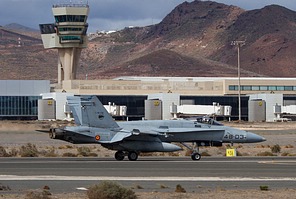



















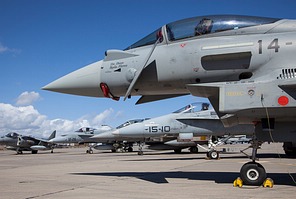



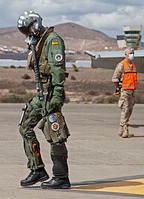



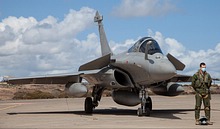
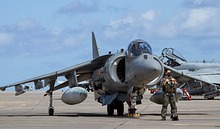
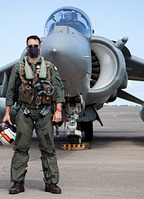
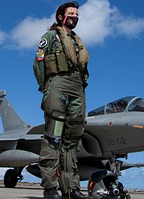
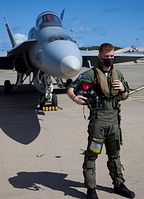
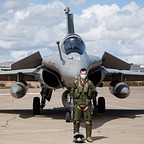
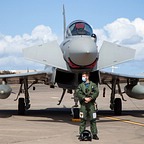
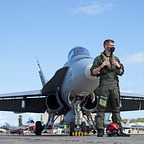
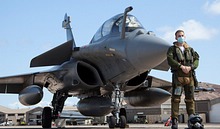
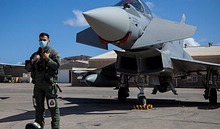



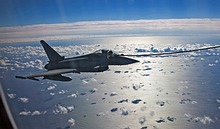
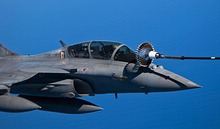

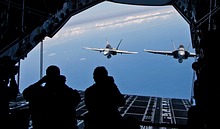



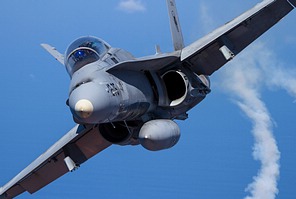
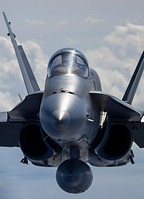
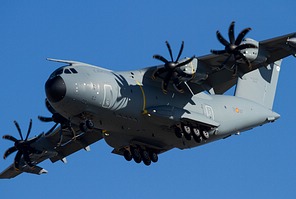





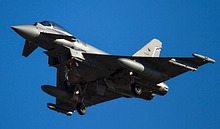
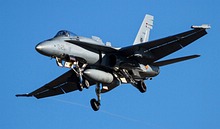

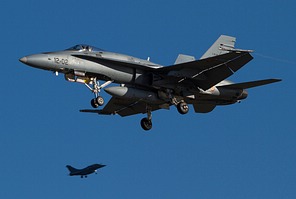







 Back to Index
Back to Index